Archive for January, 2017
January 28th, 2017 by dave dorsey
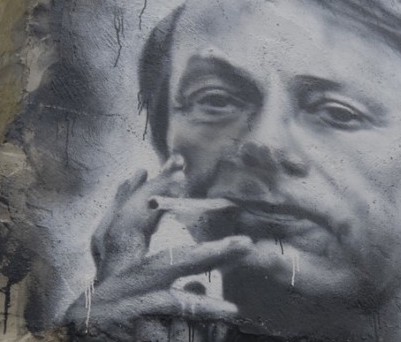
Reading this passage recently offered me a slightly different way to think about the title of Houellebecq’s latest and more compelling novel, Submission. The word “difficult” here worked like a droll, understated punch line, which is how most of the wit works in Houellebecq. From The Map and the Territory, Michel Houellebecq:
Many years later, when he had become famous—extremely famous, truth be told—Jed would be asked numerous times what it meant, in his eyes, to be an artist. He would find nothing very interesting or original to say, except one thing, which he would consequently repeat in each interview: to be an artist, in his view, was above all to be someone submissive. Someone who submitted himself to mysterious, unpredictable messages, that you would be led, for want of a better word and in the absence of any religious belief, to describe as intuitions, messages which nonetheless commanded you in an imperious and categorical manner, without leaving the slightest possibility of escape—except by losing any notion of integrity and self-respect. These messages could involve destroying a work, or even an entire body of work, to set off in a radically new direction, or even occasionally no direction at all, without having any project at all, or the slightest hope of continuing. It was thus, and only thus, that the artist’s condition could, sometimes, be described as difficult.
January 24th, 2017 by dave dorsey
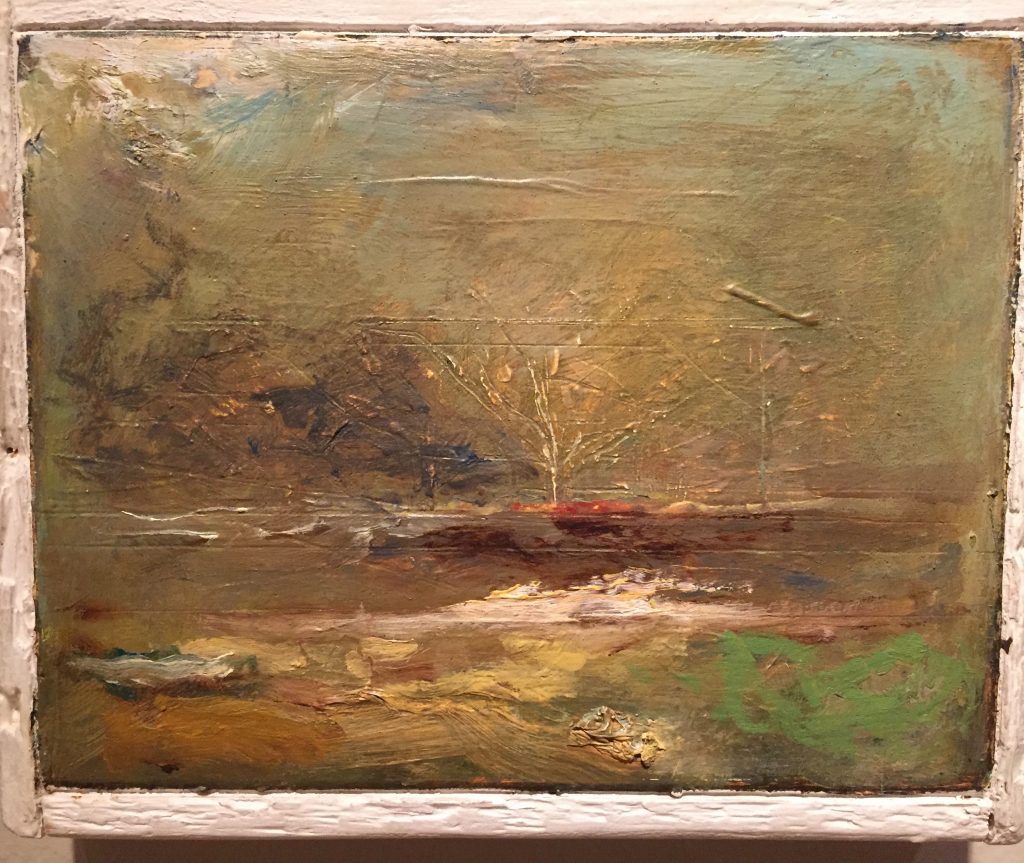
Last week, two days before the Inauguration, I somehow managed to fly into Washington D.C. and then back home the same afternoon without seeing any signs that our new President was about to ascend to his office. It was an uninterrupted ride from Dulles to Embassy Row, near Georgetown, where I had a meeting with one of Eastern Europe’s ambassadors to the U.S. to talk briefly about working with him on a book project. But our lunch plans were interrupted by a delegation of his countrymen who were insisting on attending the Inauguration. While he attended to his guests, I was happy to amuse myself for an hour before we were able to meet. His administrative assistant was incredibly solicitous and offered to keep me company until he was able to return, but instead I wandered around Embassy Row, had a quick salad at Pizzeria Paradiso on Dupont Circle and then realized the Phillips Collection was a couple blocks away.
It had been years since I’d visited the Phillips, which I recalled as one of the best art-viewing days of my life, the permanent collection was so good. I was able to spend only about twenty minutes there this time, most of which I invested in the rooms where the institution’s large holding of Jake Berthot’s paintings was temporarily on view. I moved quickly past the earlier paintings until I came upon a fairly recent one of a lone bare tree. At first sight, it was remarkable, and the longer I stood before it, the more it offered up–I’m repeating an observation that has been made before about his work, that after long viewing what you see in his work becomes increasingly rich and subtle. His work ranged from nearly pure abstraction to his minimal, often Turneresque evocations of the natural world around his Catskill studio. His engagement with heavily-layered paint brought to mind Stanley Lewis and even Auerbach, though Berthot’s accretion of thick oil feels more tranquil. There’s a dark serenity in his images, a truce–or perhaps a productive trade agreement–with mortality. His work resonates more with the Taoist void, a sense that form in nature rises up out of something inexpressible and inchoate, but intensely alive. Even in that very short window of time, I felt I’d discovered work both remarkable and masterful. A very serendipitous encounter, thanks actually to Google Maps, which–when I routed my walk back to the embassy–had helpfully pointed out that the Phillips was only a short walk from the bar where I was finishing lunch, and only a block from my appointment.
Hyperallergic interviewed Berthot a few years ago, not long before he died, and it was a revealing conversation. He was mostly self taught, though he did some coursework in his youth, and over the years he groped toward his final approach in fits and starts. For a while, early in his career, he found himself doing constructed canvases and then painting them in a single sitting, until he realized he’s reached a dead end, working from ideas rather than feeling. He found a way out as he stood before a De Kooning, when one aspect of the painting opened up the approach his used from them on, which sounds akin to Agnes Martin’s methods in much of her work. He started to rely on an idiosyncratic grid as the seed for everything that followed–not as an aid for drawing a subject, but as a catalyst for feeling his way forward with the application of paint, creating a field of tensions and a sense of volume that guided how he applied his oil. The interview is fascinating.
JS: Yes. You made abstract paintings for many years before you started landscape-based paintings. The shift was received as very dramatic, but did it feel dramatic to you?
JB: Yes. It was huge. I was a cowboy-boot-wearing New York painter. I’m not a New York painter anymore. I am living in nature as the subject. The way I felt earlier could be summarized by de Kooning’s comment, “I wouldn’t paint a tree if you gave me a million dollars.” And for a year after I moved upstate, I was still doing the paintings I had been doing in New York: abstract paintings.
In my early days in Soho, a businessman who visited the studio remarked of a painting, “That looks like the most beautiful landscape on the worst possible day to see it.” I had titled the piece, Pennsylvania Road Trip. It was abstract, and I would have denied that it had anything to do with nature or the landscape. But it was inspired by this long bus trip I took to Pennsylvania. I was just blown away by nature as I looked out the bus window.
But living here (Catskills), I realize that I didn’t have a choice. I didn’t want to disguise nature. I realized that these spaces kept coming up in my work, and I had to go there. Young painters now know me as a representational painter. Many of my peers wonder what happened to the abstract painter. No matter what, I am still the same painter.
Even though my work now is landscape-based, it is more abstract than it was a few years ago. It is dealing with the space in the middle. At first I was painting the volume of the tree in space. Next, what I felt was that space itself has volume. And now, it is the light that has volume.
There is a phenomenological truth that exists in nature. Some days it is totally flat, other times and days, filled with endless voids and volume.
I never thought, because of my age, I would have enough time to shape, build and work with nature’s complexity. Now, I don’t want to depict nature; I want to paint nature’s phenomena. The painting is always the boss. I go where it says to go; it is endless. That’s the beauty of painting. That is its freedom. It all leads back to the horse.
If you want to understand the reference to the horse, read the interview, when he talks about his parents and the drawing of a horse his mother kept on the back of a picture of the Last Supper in their dining room. The relationship of form to void in that line drawing–his first exposure to art–prefigures the essence of what he was trying to do in his mature paintings.
January 21st, 2017 by dave dorsey
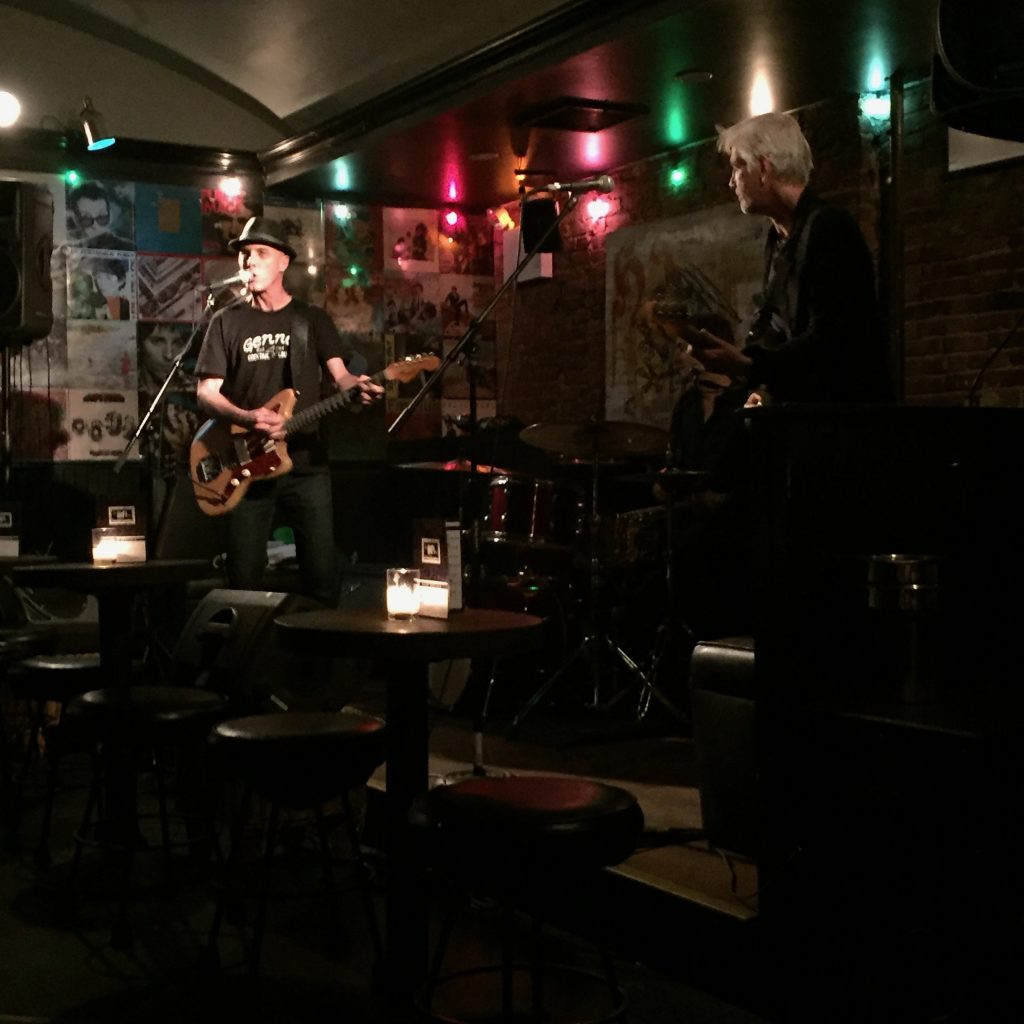
Freedy Johnston and friends, in concert at The HiFi Bar, Sept. 8, 2016
Will Sheff: I was talking to Mike Stuto the owner of The HiFi Bar, and he was saying to me about that bar, “If I listen to somebody else about the bar, and I make changes to it, and it fails, I feel like a fool. But if I make my own decision and that fails, well I was wrong and I don’t feel ashamed about it.” I’ve come to believe that with success and failure, there’s a heavy degree of randomness, or maybe unknowableness and unpredictableness to it, but if you follow your heart or passion, then you kind of win.
Todd Barry: I guess we should both start singing “My Way” now.
–The Todd Barry Podcast #133
A few months ago, I discovered The HiFi Bar. Just writing that sentence reminds me of the Art Brut lyric: “I can’t believe I’ve only just discovered The Replacements.” (At least I’ve been a rabid fan of The Replacements for many years, but that doesn’t make up for having discovered The HiFi Bar this late.) It’s a unique refuge for music in a place smaller than almost anywhere I’ve heard music other than my own bedroom, a particular harbor of honesty and quality in a world devoted to everything but those two qualities. It’s aptly named because this is the sort of place I think John Cusack would have built when he decided to break out of retail LP sales and become a music producer at the end of High Fidelity. Walking in, before I understood where I was, I felt as if I’d found a home-away-from-home. Even without a performer on the tiny stage in back, it had the feel of a great, classic pub, like Pride of Spitalfields, near Brick Lane, where I once happened to be installed on a stool when a cohort of London policemen filed in for a retirement party. On that night, a few years ago, one of them seated himself at the upright piano to play a medley of Elton John and I asked him for some cuts off of Tumbleweed Connection, but he admitted he didn’t know the album. (How is this possible?) It was one of those warm and unguarded moments among strangers, full of heart, when you feel as if you’ve been adopted by the clan you’ve stumbled into, if only for an hour or two. My hours at HiFi last week were like that. I came away thinking, this is what practicing any art is about.
A week or two before I drove down to New York City, I bought tickets for Freedy Johnston’s performance there, and then read what little is out there about him. He’d been named Rolling Stone’s “Songwriter of the Year” in the mid-90s; he’d done recordings produced by T. Bone Burnett and Danny Kortchmar; he’d been celebrated by critics as a ‘songwriter’s songwriter.’ Yet, all of that, and this was the only concert I could find for him in all of last year in the usual listings. Why was he playing here? So I went back to the entrance, where the woman at the door was still awaiting newcomers, with her small list of those who had bought tickets to the show. My name was third down on the print-out of maybe twenty names, at most, and I could see she’d checked it off MORE
January 19th, 2017 by dave dorsey
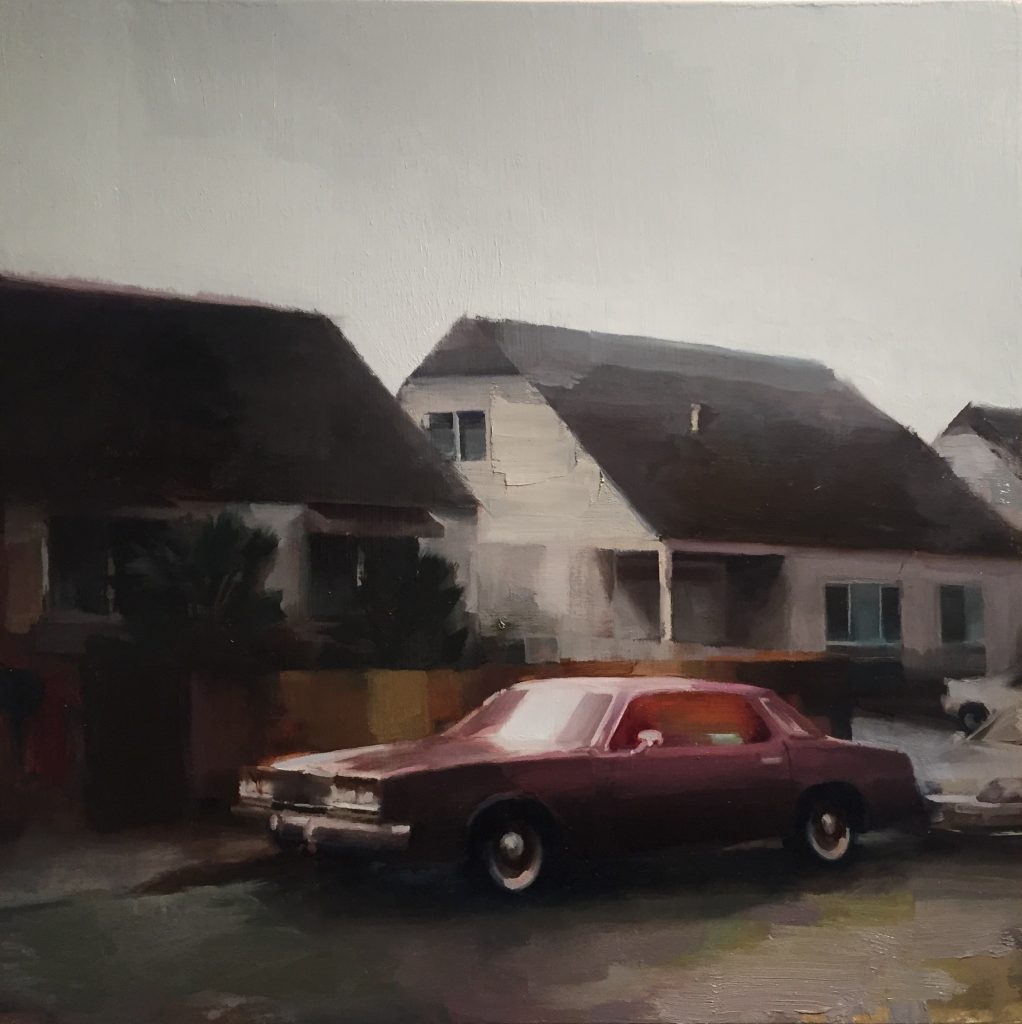
Pacifica, Kim Cogan, Maxwell Alexander Gallery, Sante Fe
My photograph, from the L.A. Art Show, doesn’t do it justice.
January 17th, 2017 by dave dorsey
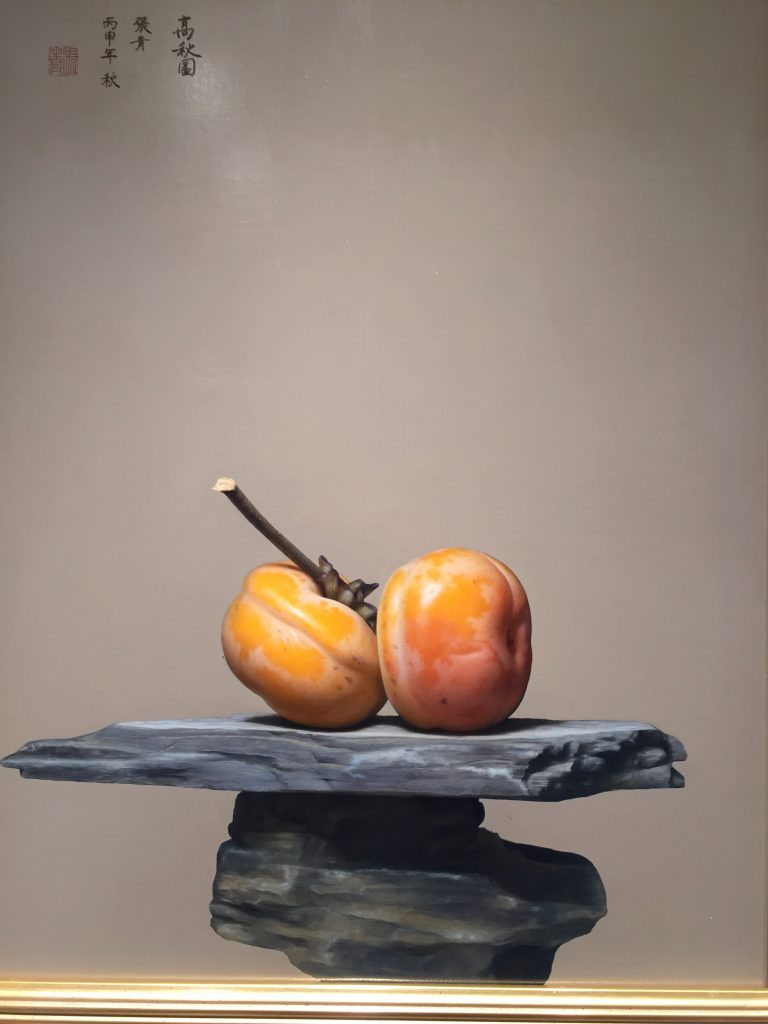
Persimmon and Stone, oil, Zhang Qing, China
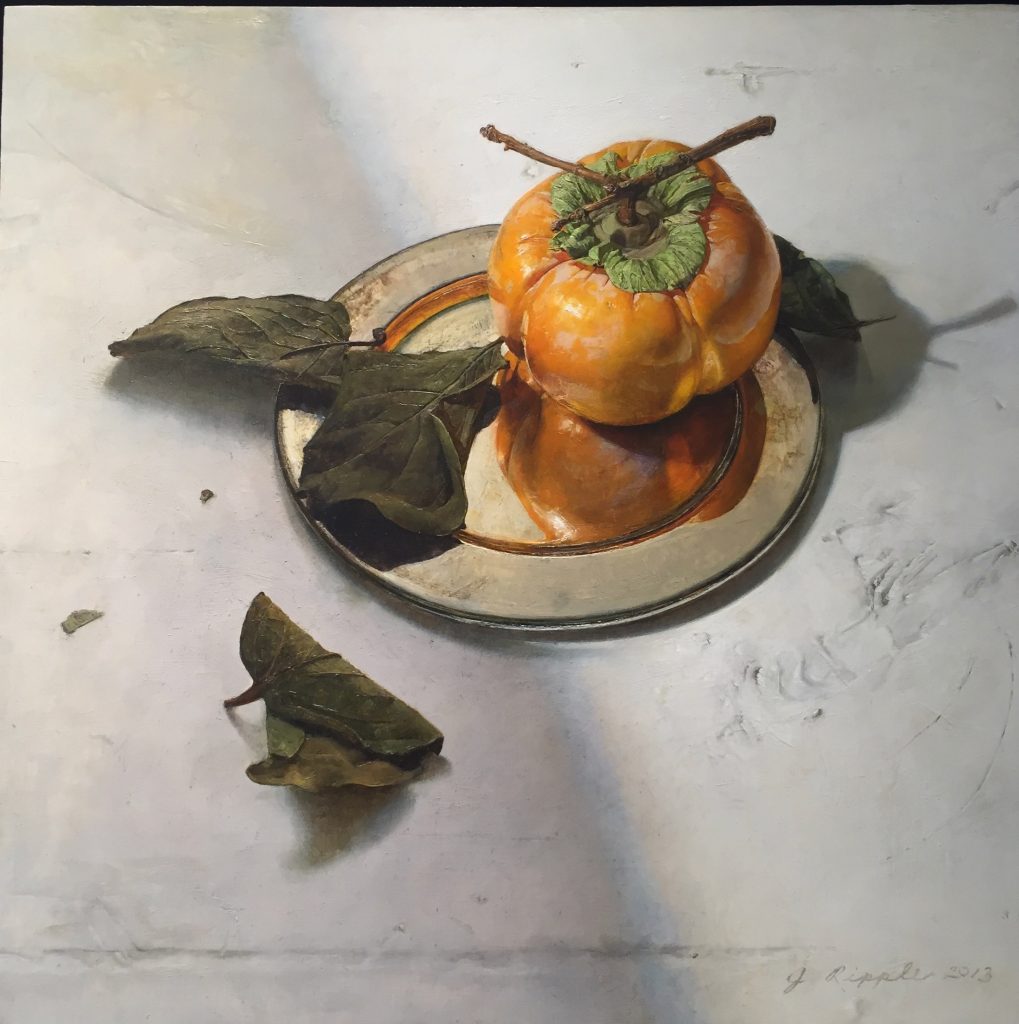
Persimmon, oil on panel, Jeffrey Ripple, Arcadia Contemporary
There were both on view at the L.A. Art Show.
January 15th, 2017 by dave dorsey
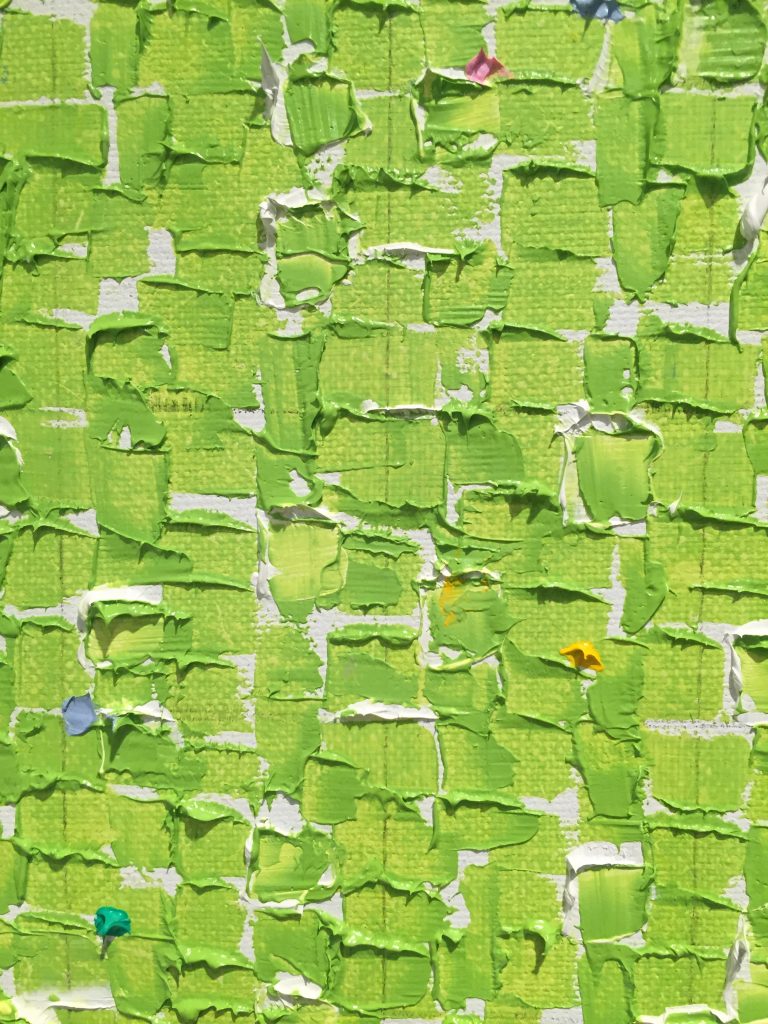
Water PPWG 16, detail, oil on canvas, Young-il Ahn, Korean
I spent Thursday afternoon at the L.A. Art Show, which concluded tonight. While much of it was of little or no interest, there were pockets of remarkable work, and I was gratified that my flight home got delayed by rain–denizens of Southern California apparently get premonitions of the world’s end when a steady rain begins to fall. Traffic slows dramatically. Jets get delayed. And all in reaction to a moderately steady rainfall. It’s pretty funny. (If you want a serious brush with death by weather, come to Rochester NY, and see what it takes to shut down the Thruway in January.) So I moved my flights a day forward, to Friday, giving me a leisurely visit to this big art fair which drew 70,000 people in 2016.
Toward the end of my meandering through the Convention Center, I came across a booth staffed by Baik Art, a gallery on La Cienega. Though the monochromatic surfaces looked at first like something I’d quickly forget, I turned a corner and saw a couple more of Young-il Ahn’s canvases and paused long enough to be drawn into them. I’d never heard of this painter before. The intelligent and perceptive young woman staffing the booth approached to tell me about him. He was born in Korea, moved to L.A. since the 60s, and now in his 70s, he’s been a painter for 50 years. He’s spent decades trying to capture the soul of the Pacific Ocean in these meditative images. I told her how much they impressed me.
“But don’t you wonder why?” I asked. “It’s a mystery, isn’t it, what makes such simple, repetitive images so good?”
She knew I wasn’t really asking. I would find it impossible to specify anything in the painter’s facture that struck me as exceptionally skillful, based on the standards I’d apply to most paintings. They were meticulously executed, which is obvious in the detail above, but trying to explain why the care he took with his mark-making has such a powerful impact on the viewer is like trying to pin down why the simplicities of Agnes Martin or Frederick Hammersley are so compelling and irresistible. You sense they adhere to some obsessive, personal imperative, so that every detail has been subjected to the most intense scrutiny and effort–and the energy of this kind of attention radiates from the surface. One feels the need to resort to come kind of corollary for Hindu distinctions between gross and subtle bodies–an invisible aura?–a whole metaphysics of painting that few people would find persuasive, including me. But my sense was that a quality, an X, akin to that kind of Vedantic distinction operates in all painting, so that something is conveyed through visual means by a painting as a whole, but is nowhere identifiable with any particular tangible qualities you can isolate and identify. You can easily spot the surface excellence in most paintings, but work like this conveys far more than pleasure and beauty and craftsmanship–and yet how to describe what that extra something is and how this transmission takes place? It’s nowhere and everywhere in the painting.
January 1st, 2017 by dave dorsey
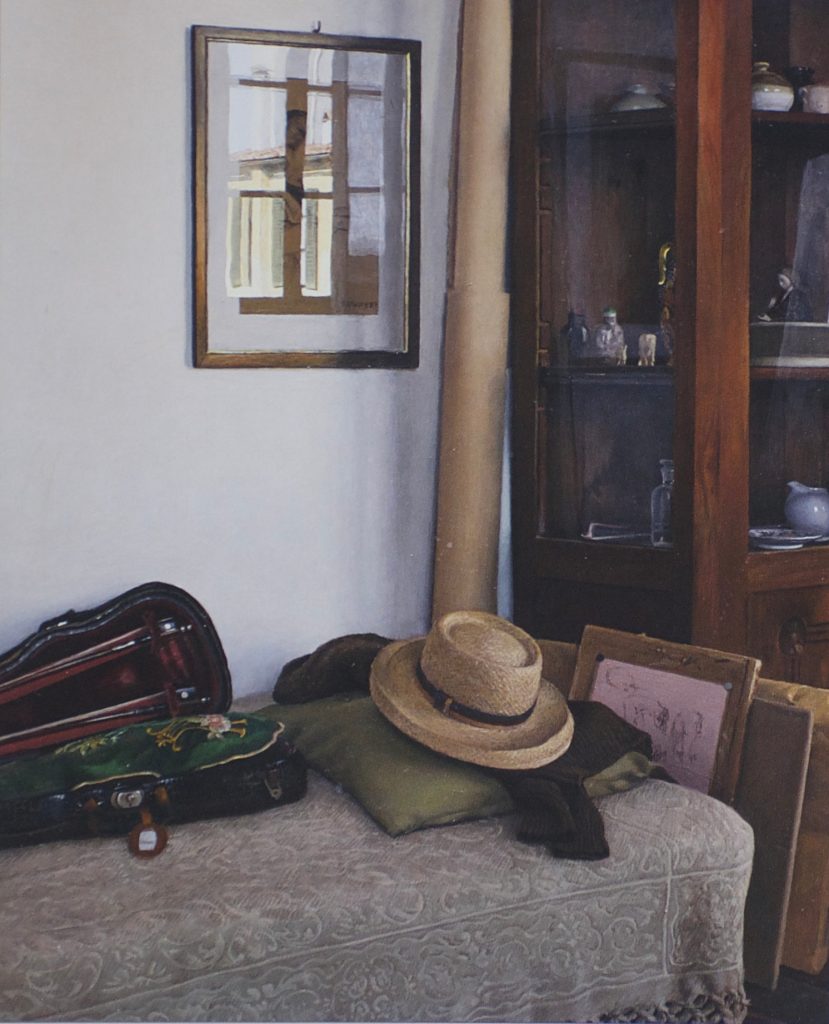 From the cover of the latest American Arts Quarterly, Richard Maury’s Vetrina, 2016, courtesy John Pence Gallery, San Francisco. His work reminds me of John Koch’s, but I love Maury’s work where I simply admire Koch’s. The light of a Koch interior is clearly the light of upper Manhattan, not the Mediterranean. It makes a huge difference to live and work in Florence, Italy. Nothing is lost in Maury’s shadows–everything in one of his paintings is lucid, glowing in a light that seems like the visual equivalent of happiness. That bright patch of yellow wall from the house across the way, glancing through the unseen window and bouncing off the glass of the framed drawing would have drawn as much praise from Proust as the little patch of yellow wall in the Vermeer he wrote about–but which has never been identified conclusively. Gazing at a Richard Maury painting is a fitting way to begin a new year: his work makes me think the future is bright for painting, where anything and everything is still possible.
From the cover of the latest American Arts Quarterly, Richard Maury’s Vetrina, 2016, courtesy John Pence Gallery, San Francisco. His work reminds me of John Koch’s, but I love Maury’s work where I simply admire Koch’s. The light of a Koch interior is clearly the light of upper Manhattan, not the Mediterranean. It makes a huge difference to live and work in Florence, Italy. Nothing is lost in Maury’s shadows–everything in one of his paintings is lucid, glowing in a light that seems like the visual equivalent of happiness. That bright patch of yellow wall from the house across the way, glancing through the unseen window and bouncing off the glass of the framed drawing would have drawn as much praise from Proust as the little patch of yellow wall in the Vermeer he wrote about–but which has never been identified conclusively. Gazing at a Richard Maury painting is a fitting way to begin a new year: his work makes me think the future is bright for painting, where anything and everything is still possible.







 From the cover of the latest American Arts Quarterly, Richard Maury’s Vetrina, 2016, courtesy John Pence Gallery, San Francisco. His work reminds me of John Koch’s, but I love Maury’s work where I simply admire Koch’s. The light of a Koch interior is clearly the light of upper Manhattan, not the Mediterranean. It makes a huge difference to live and work in Florence, Italy. Nothing is lost in Maury’s shadows–everything in one of his paintings is lucid, glowing in a light that seems like the visual equivalent of happiness. That bright patch of yellow wall from the house across the way, glancing through the unseen window and bouncing off the glass of the framed drawing would have drawn as much praise from Proust as the little patch of yellow wall in the Vermeer he
From the cover of the latest American Arts Quarterly, Richard Maury’s Vetrina, 2016, courtesy John Pence Gallery, San Francisco. His work reminds me of John Koch’s, but I love Maury’s work where I simply admire Koch’s. The light of a Koch interior is clearly the light of upper Manhattan, not the Mediterranean. It makes a huge difference to live and work in Florence, Italy. Nothing is lost in Maury’s shadows–everything in one of his paintings is lucid, glowing in a light that seems like the visual equivalent of happiness. That bright patch of yellow wall from the house across the way, glancing through the unseen window and bouncing off the glass of the framed drawing would have drawn as much praise from Proust as the little patch of yellow wall in the Vermeer he